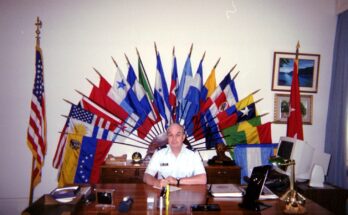In the 1970s the U.S. had 1054 land based Intercontinental Ballistic missiles. One thousand Minuteman and 54 Titan IIs. The Titan II was located in three states; Arkansas, Kansas, and Arizona. Eighteen at each location. It was the largest ICBM the U.S. ever built. Ten feet in diameter and 104 feet tall topped by a General Electric Mark VI reentry vehicle containing a nine megaton warhead. The W53 warhead was the most powerful weapon ever deployed by the U.S. The B-52 carried the airborne counterpart, the B53.
Unlike earlier liquid fueled missiles, the Titan II was stored in an underground silo ready to launch with the propellants already on-board. From the time the two launch officers turned their keys, the Titan II would begin liftoff 56 seconds later. The two propellants, unsymmetrical dimethyl hydrazine and nitrogen tetroxide were “hypergolic”. They ignited on contact with no ignition system required.
Each Titan II was manned by a launch crew of four people. Two launch officers and two non-commissioned officers. The missile was located only about 200 feet from the control center via an underground cable way and two thick blast doors. At the beginning of each 24 hour alert tour, the two NCOs would go to the silo area and perform a “daily shift verification” of the missile and its support equipment.
The Titan II had a range of more than 6,000 miles bringing it within reach of most targets in the USSR and many targets in the People’s Republic of China. It was referred to as a “ballistic missile” meaning that the rocket booster took the warhead to an exact point in space at an exact speed and pointed in an exact direction. From that point, the warhead fell to the target like a thrown rock with no further guidance.
Each titan II warhead was set to explode at an altitude of 10,000 feet to ensure maximum destruction of above ground targets. Launch crews were offered the opportunity to know what their targets were. My first Titan II alert site was complex 373-004 in North Central Arkansas.
I went to our plans and intelligence directorate and found my target was the city of Leningrad, population six million. During my three year alert tour, some of my friends decided they could not in good conscience kill millions of people they had never met and who had not done them the slightest harm. They remained in the Air Force but were assigned to administrative duties. I decided not to think about it. Reasoning that if the launch order came it would be with sufficient justification.
The Titan IIs are gone today. The last alert site, complex 373-008, where I once worked as a new Lieutenant was deactivated on 5 May, 1987. The missile was trouble prone, suffering many fatal accidents. The most horrible being on 9 August, 1965, when 53 members of a civilian work crew were quickly killed when a workman with a cutting torch accidentally cut a high pressure hydraulic line. The instant fire burned those nearby with the rest dying from smoke inhalation and suffocation as the oxygen in the underground missile site was rapidly consumed.
After deactivation, the Titan II saga continued as the big missiles were used in space launches. In the Gemini Program the Titan II launched eight of our astronauts, including Neil Armstrong.



